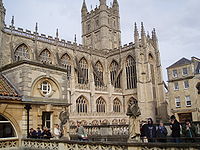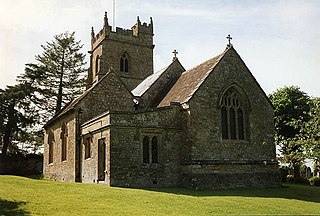
South Cadbury is a village and former civil parish, now in the parish of South Cadbury and Sutton Montis, in the Somerset district of the ceremonial county of Somerset, England. The parish includes the village of Sutton Montis.
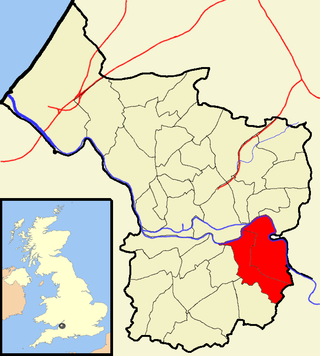
Brislington is an area in the south east of the city of Bristol, England. It is on the edge of Bristol and 10 miles (16 km) from Bath. Brislington Brook runs through the area in the woodlands of Nightingale Valley and St Anne's Wood. Brislington formerly housed the HTV West Studios on Bath Road, and this is situated next to the historic Arnos Vale Cemetery. Other notable landmarks include Brislington House and the 15th-century St Luke's Church. During the 18th–19th century, Brislington was regarded as a picturesque country village and contained many country homes.

Horfield is a suburb of the city of Bristol, in southwest England. It lies on Bristol's northern edge, its border with Filton marking part of the boundary between Bristol and South Gloucestershire. Bishopston lies directly to the south. Monks Park and Golden Hill are to the west. Lockleaze and Ashley Down are on the eastern fringe. The Gloucester Road (A38) runs north–south through the suburb.

Farleigh Hungerford is a village and former civil parish, now in the parish of Norton St Philip, in the Somerset district, in the ceremonial county of Somerset, England, 9 miles southeast of Bath, 3½ miles west of Trowbridge on A366, between Trowbridge and Radstock in the valley of the River Frome. In 1931 the parish had a population of 98.

Brympton is a civil parish and electoral ward in Somerset, England. The parish is situated on the north-west edge of Yeovil in the South Somerset district. The parish/ward has a population of 7,308. The civil parish covers the western part of the Yeovil built up area, including the stadium of Yeovil Town F.C. at Huish Park, and also includes the hamlets of Brympton D'Evercy, Lufton, Thorne Coffin and Alvington as well as part of Chilthorne Domer.
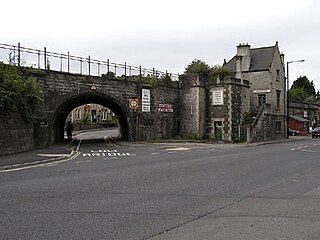
Twerton is a suburb of the city of Bath, in the Bath and North East Somerset district, in the ceremonial county of Somerset, England, situated to the west of the city, and home to the city's football club, Bath City.

Whitchurch is a village in north Somerset, England and an adjoining suburb of southern Bristol, bounded by Hartcliffe to the west and Hengrove and Knowle to the north. The suburb was initially developed during the 1930s.
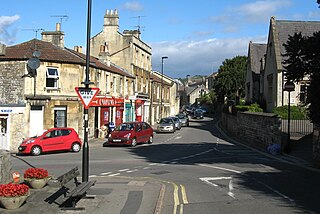
Weston is a suburb and electoral ward of Bath in Bath and North East Somerset, Somerset, England, located in the northwest of the city. Originally a separate village, Weston has become part of Bath as the city has grown, first through the development of Lower Weston in Victorian times and then by the incorporation of the village into the city, with the siting of much local authority housing there in the period after World War II.

Woodston is a largely residential and industrial area of the city of Peterborough, in the ceremonial county of Cambridgeshire, England. For electoral purposes, it forms part of Fletton ward in North West Cambridgeshire constituency. Oundle Road runs through most of Woodston into the Ortons.
Thomas Baldwin was an English architect in the city of Bath, who was responsible for designing some of Bath's principal Georgian buildings.
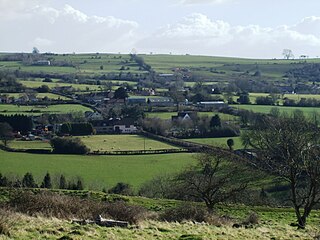
Rowberrow is a small village and former civil parish, now in the parish of Shipham in the Somerset district, in the ceremonial county of Somerset, England. In 1931 the parish had a population of 56. On 1 April 1933 the parish was abolished and merged with Shipham.

The Church of St Mary the Virgin is located on Darlington Street in the Bathwick area of Bath, Somerset, England. The church is Anglican and located near Pinch's Sydney Place (1808) and Bath's famed Sydney Pleasure Gardens. The church was constructed by the Pulteney family, who used it to replace the medieval parish church of St Mary's, Bathwick, known even in Georgian times as Bathwick Old Church. The churchyard is now part of Smallcombe Cemetery.

Stanton Prior is a small village within the civil parish of Marksbury, in the Bath and North East Somerset district, in the ceremonial county of Somerset, England. It is set in Duchy of Cornwall countryside between Newton St Loe and Marksbury, 6 miles (9.7 km) west from the UK city of Bath. In 1931 the parish had a population of 85. On 1 April 1933 the parish was abolished and merged with Marksbury.

Walcot is a suburb of the city of Bath, in the Bath and North East Somerset district, in the ceremonial county of Somerset, England. It lies to the north-north-east of the city centre, and is an electoral ward of the city.

Writhlington is a suburb of Radstock and 6 miles (10 km) north-west of Frome, in the Bath and North East Somerset district of Somerset, England.
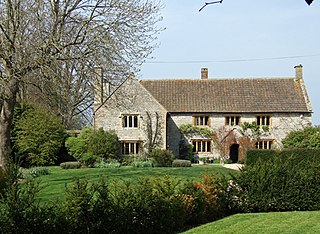
Rimpton is a village and civil parish 5 miles (8 km) north-west of Sherborne, and 6 miles (10 km) north-east of Yeovil on a tributary of the River Parret in the South Somerset district of Somerset, England.
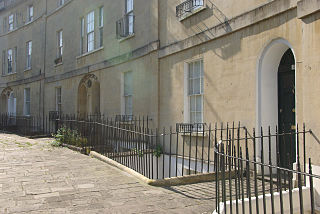
Widcombe is a district of Bath, England, immediately south-east of the city centre, across the River Avon.

Burnett is a small village within the civil parish of Compton Dando, approximately 500 metres (1,600 ft) from the River Chew in the Chew Valley within the unitary authority area of Bath and North East Somerset in Somerset, England. The nearest town is Keynsham, which lies approximately 3 miles (4.8 km) north of the village. The parish had an acreage of 608 acres (246 ha). It is within the Bristol/Bath Green Belt.
John Pinch (1796–1849) was an architect, working mainly in the city of Bath, England, and surveyor to the Pulteney and Darlington estate. He was the son of John Pinch the elder, also an architect and surveyor to the estate.
Abbey was an electoral ward covering the centre of Bath, England. It was abolished as part of the boundary changes effected at the elections held on 2 May 2019.



















